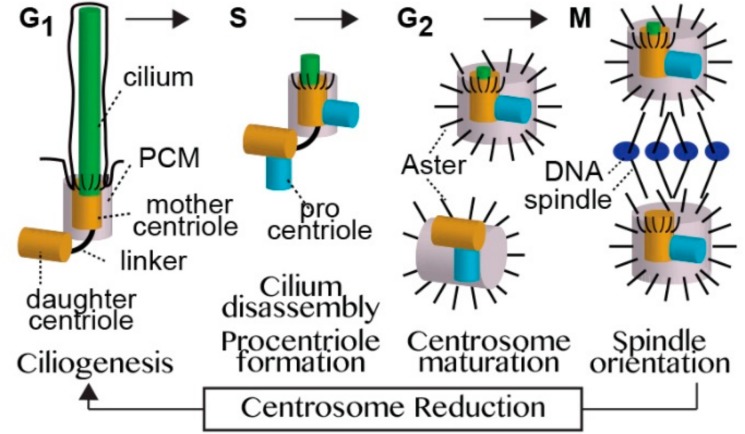Figure 4.
A model of the centriole cycle. Cells have two centrioles: the mother centriole and daughter centriole. The two centrioles have distinct roles in controlling cilium number, and in some cell types, in the outcome of asymmetric cell division. The mother centriole is the older of the two centrioles and is compositionally and structurally fully developed (mature). However, its function differs depending upon the present stage of the cell cycle. When a cell is in G1 phase, the mother centriole is enveloped by a thin layer of pericentriolar material (PCM) and assembles a cilium. In S phase, the cilium disassembles and the mother centriole forms a new centriole (the procentriole). In G2 phase, the mother centriole recruits the PCM, which nucleates and anchors microtubules to form an aster. In M phase, the mother centriole participates in the formation and localization of one of the mitotic spindle poles. After the completion of cell division, each centriole pair becomes a mother and a daughter centriole for one of the two daughter cells, and the mother centriole loses most of its PCM and astral microtubules through a process known as centrosome reduction. The daughter centriole is the younger of the two centrioles, and is compositionally, structurally, and functionally immature. When the cell is in S phase, the daughter centriole forms a procentriole. In G2 phase, the daughter separates from its mother, recruits PCM, forms an aster, and then forms the second centrosome. In M phase, the daughter centriole participates in the formation and localization of the second mitotic spindle pole, and after cell division becomes a mother centriole for one of the daughter cells.

